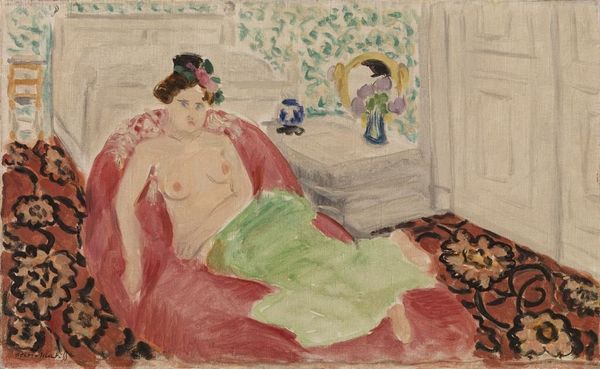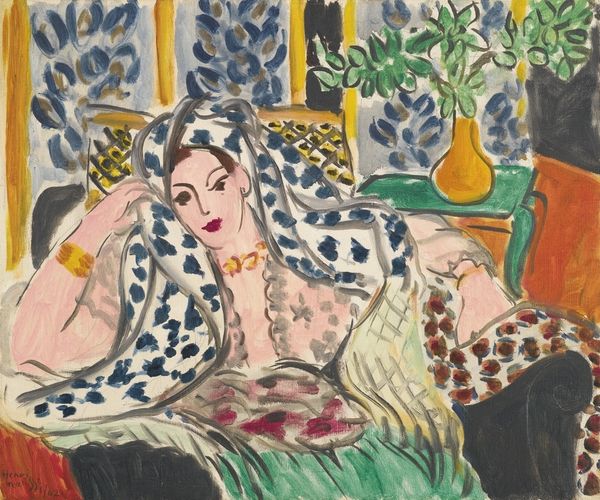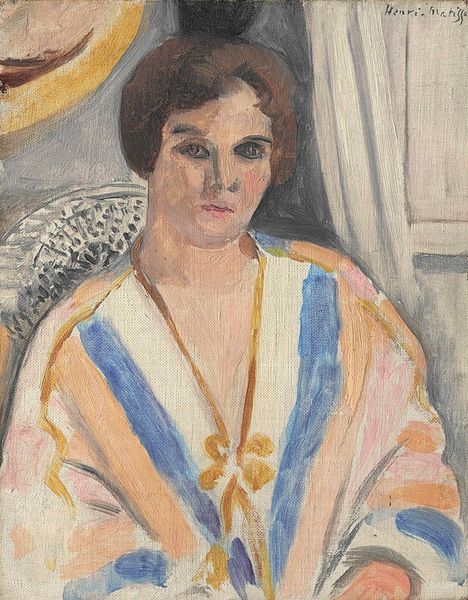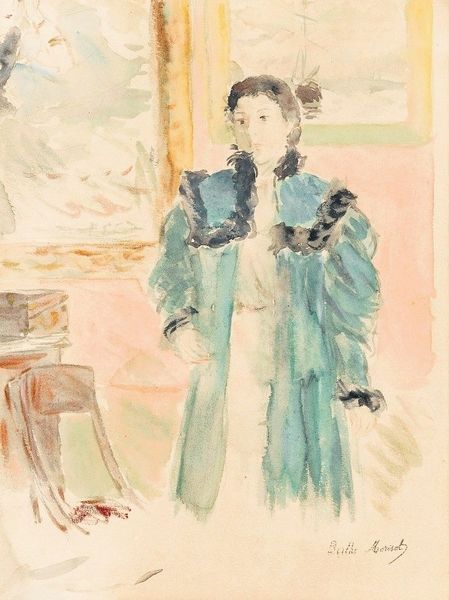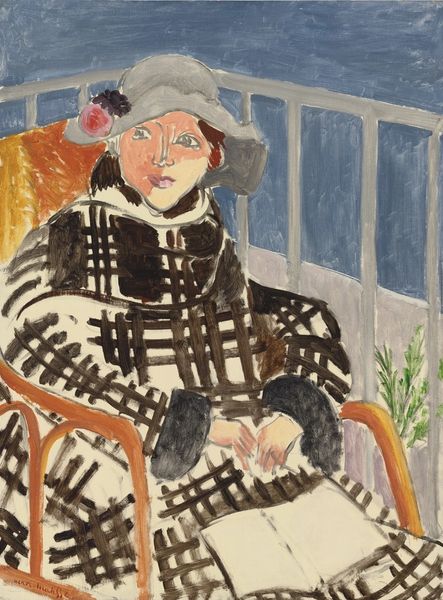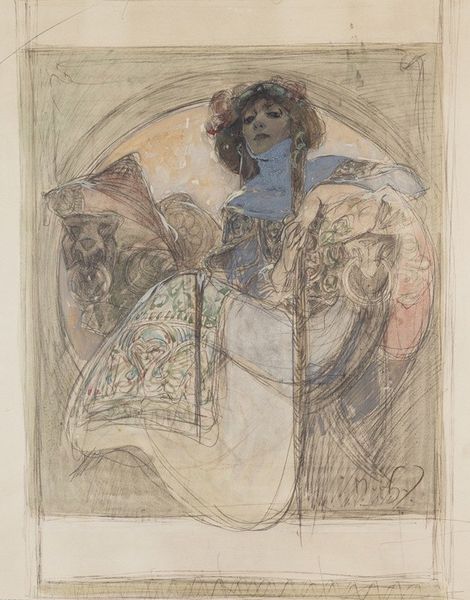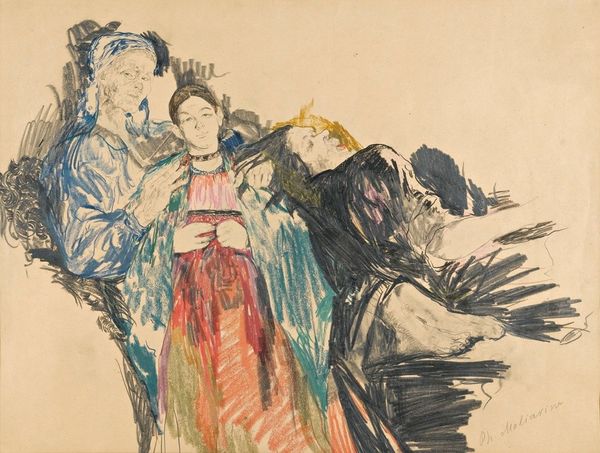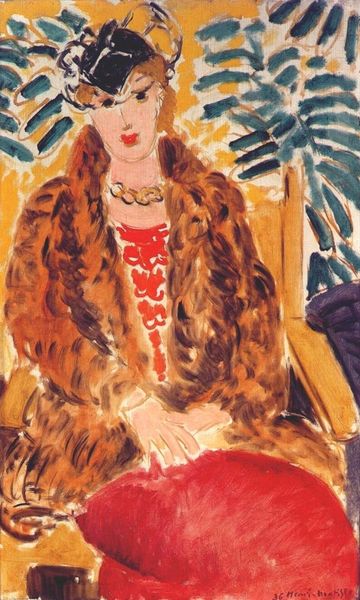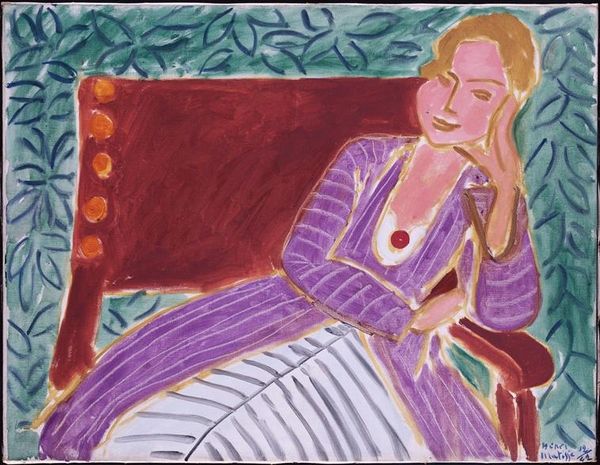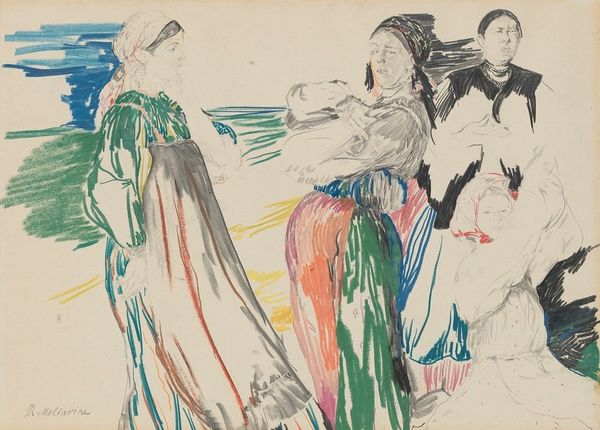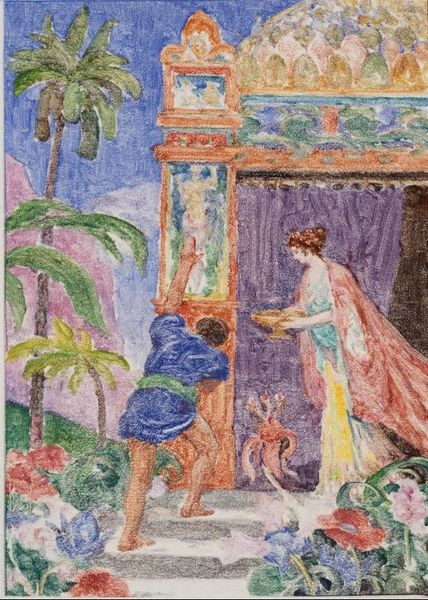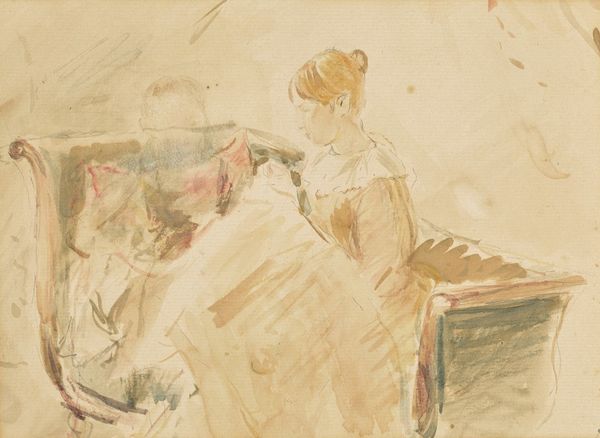
#
figurative
#
water colours
#
possibly oil pastel
#
handmade artwork painting
#
oil painting
#
acrylic on canvas
#
underpainting
#
painting painterly
#
watercolour bleed
#
watercolour illustration
#
watercolor
Copyright: Modern Artists: Artvee
Editor: Here we have Henri Matisse's "Woman on a Red Sofa," painted between 1919 and 1920. The colors feel quite soft, and there's something very domestic about the scene, even a little melancholic. What stands out to you in this piece? Curator: I am struck by how Matisse uses this image to recall a whole era of portraiture while simultaneously undercutting it. Note how the woman's gaze barely meets ours. It's a modern detachment from the idealized, classical portrait. The red sofa itself, laden with floral patterns, suggests opulence, but also, perhaps, the gilded cage of bourgeois life. The woman is adorned with jewelry and a flower. Does it speak to love or just being someone's object? Editor: So, the red sofa isn’t just a comfortable place to sit; it's a symbol, like a stage for the woman's existence. Do you think the choice of a patterned sofa and a patterned robe were intended to enhance the emotional quality? Curator: Precisely! These patterns echo the inner world, perhaps a life both vibrant and confined. Floral patterns often represented fertility, nature, and growth in art, however the red colour reminds me of danger or something hidden. How are we meant to read this lady through such symbols and colour, that contradict? Editor: I see. The combination does make it feel less celebratory and more contemplative. It's almost as if Matisse is asking us to question the true nature of beauty and domestic bliss. Curator: Exactly. Consider the mirror behind the subject, reflecting the artificialities that obscure who she is and her social status, so her interior space mirrors back these same expectations. A challenge for the artist, subject and viewer. Editor: That makes me consider portraiture quite differently; it really encourages me to look past the surface. Curator: It's a doorway, an insight to what it must be like being in her body in that time and age, something you could never otherwise know, except in art.
Comments
No comments
Be the first to comment and join the conversation on the ultimate creative platform.
